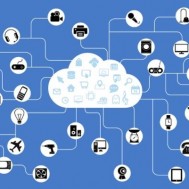The IIoT, or Industrial Internet of Things, as it is formally known, is taking over in more ways than one. In fact, it’s here to stay. The immense presence the IIoT has taken in industries that are a means to either efficiency or health/safety has reshaped how we define American business. To be familiar with the IIoT is no longer to understand it: it’s acknowledging all the different aspects of business these new technologies have modified. Here’s what you need to know about the IIoT in 2018:
1. The Industrial Internet of Things is a component of the Internet of Things.
“So what exactly is the difference?” Being able to properly distinguish the two is part of understanding what each term refers to. As previously stated, the IIoT includes means to efficiency or health/safety. The IoT does all of that plus one, including technologies that create better user experiences. Therefore, the IIoT is a subcategory of the IoT, but the reverse is not true.
2. The IIoT is subdivided as well.
In 2018, the IIoT market as a whole is usually analyzed by professionals based on a number of different classifications. One is location-based, divided between the regions of North America, Europe, Asia/Pacific Islands and Latin America, the Middle East and Africa (LAMEA). There are also different “types” of IIoT technologies: hardware, software, services, and connectivity. Finally, as you may have guessed, the IIoT is often analyzed based on what industry it is operating in, whether it be manufacturing, transportation, or healthcare, among others.
3. Its influence is permeating into industries you never would’ve guessed.
With the help of the IIoT, we are on the brink of a new industrial revolution, because a variety of industries are able to optimize the efficiency and safety of their methods with its support. An example is the agricultural industry, where smart farming technology aids farmers in accomplishing tasks such as measuring crop growth and soil quality, optimizing water usage, and oversight of livestock. A favored tool amongst farmers who implement these practices is the drone, which can be used in the air or on land.
4. There are limitations to cloud computing.
When it comes to jobs that need to be accomplished in real time while using technology, it should be acknowledged that turning to the Cloud is not always the best option. Edge computing is an IT structure that was built with the speed at which data is processed as its main focus. The most modern and effective business strategies will be able to differentiate tasks that are better fit for edge computing from cloud computing. Security may be a good example of this, as the safety of people and intellectual property could only benefit from real time computations being made.
5. The IIoT has added a new edge to the job market.
The IIoT has revolutionized the IT sector, increasing a demand for skills that weren’t even in existence a decade ago. However, nothing in our digital era remains exclusive to IT: all employees can increase their marketability (and profitability!) by adding to their competence in a world that relies on the IIoT. Florida International University became the first American school to offer an IoT major, announced midway through 2017. Reasonably so, as many US companies are looking to bring on technology professionals with an IIoT skill set.
6. It’s not finished growing yet.
With an estimated 20 billion devices connected to the IoT going into the New Year, we knew that 2018 was going to be a big year for smart technology. However, the most extreme assumption could be the idea that we’ve already maxed out our IoT support. The IIoT will continue to play a significant role within that as well, as it has forecasted that healthcare and manufacturing are two industries that are likely to see great growth in the coming years.
Want to talk manufacturing with IIoT technology? Tweet us @AppleRubber
